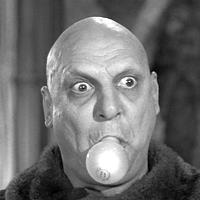Well, I've finished the first batch. I decided to keep it simple with a 5 gallon batch of cream ale. I actually don't really like the style that much, but it is a simple and cheap one to start with just in case if I need to dump it!
Also, even after feedback about not to worry about scorching, I wanted to do my own test to make sure to remove any lingering doubts.
I started last night to heat the strike, mill, mash in, and fill the HLT with the sparge water. All of that from turning the first valve to putting up the mash paddle was just at 30 minutes.
Then, today, I started heating the sparge water that was already filled in the HLT, vorlaufed, and then transfered to the BK, sparged, then started the boil. Every heating step essentially took around 15 minutes, which was pretty amazing. It took 15 minutes to heat the sparge water to 185F, and then just over 15 minutes to get to boiling.
I timed the work I did today, and from switching on the HLT to turning off the light after cleaning was 2 hours 10 minutes. I started cleaning at around 1 hour and 46 minutes to my recollection, so cleaning took a very long time today, and I did make a mess of it. This is when I really wish I had a floor drain, and I could just wash everything down there. I had to use a towel at the end to wipe up some of the mess I made.
So total time that I had to be there was right around 2 hours and 40 minutes, which astounds me, especially given that I did make a number of mistakes. This really opens some possibilities for me in terms of being able to brew around my family schedule. I think I'll be able to manage it so that in the future after getting home from work, I'll be able to spend the 30 minutes to mash in and get the sparge water ready, and then after the kids are put to bed, I do the rest of the brew day in two hours.
The first mistake I made was last night. I started milling, and I had forgotten to remove the lid to the mash tun, and was milling onto the lid. Haha. I couldn't believe I did that. When I was brewing with propane outdoors, I had to wheel the mill out, and would always remove the lid to the mash tun before putting it under the mill, so I had forgotten to remove the lid after I had just put the mill down from the wall.
I also forgot to close the valve after mashing in, and there was some backflow before I caught it.
While cleaning, I had forgotten where I had put the exit tubing from the pump, and I started pumping leftover wort all over the table. At one point, the silicone tubing also slipped out of the fermenter while filling, but I was right there, so that wasn't too big of a mess.
Part of the cleaning issue is that I am trying to get everything over to the sink. I am wondering if I need to have a more permanent plumbing setup to make this easier - mounting tubing on the wall with camlock fittings, with tubing routed up the wall, across the joists, and down to the sink. Now that I am thinking more about it, I could get more copper pipe, mount it to the wall, with a camlock by the brew stand, and a simple exit to the sink, maybe some tubing for the last bit so that I don't have a copper pipe jutting into the sink area.
Man, it looks like a mess when I am chilling though, I have a small pot that I use to recirculate star san through the dual counterflow while I am in the boil. I have the march pump hooked up, I have a hose coming from the wall for the first chilling stage, with another hose going to the sink to drain the hose water coming out of the chiller, then I also have a sump pump in a bucket of ice water with a hose going in to the second stage, and another hose recirculating back into the bucket. Trying to disconnect these and purge out the liquid at the end took me a while to figure out to minimize spilling, and even then there was a lot of water on the ground at the end. Haha.



























